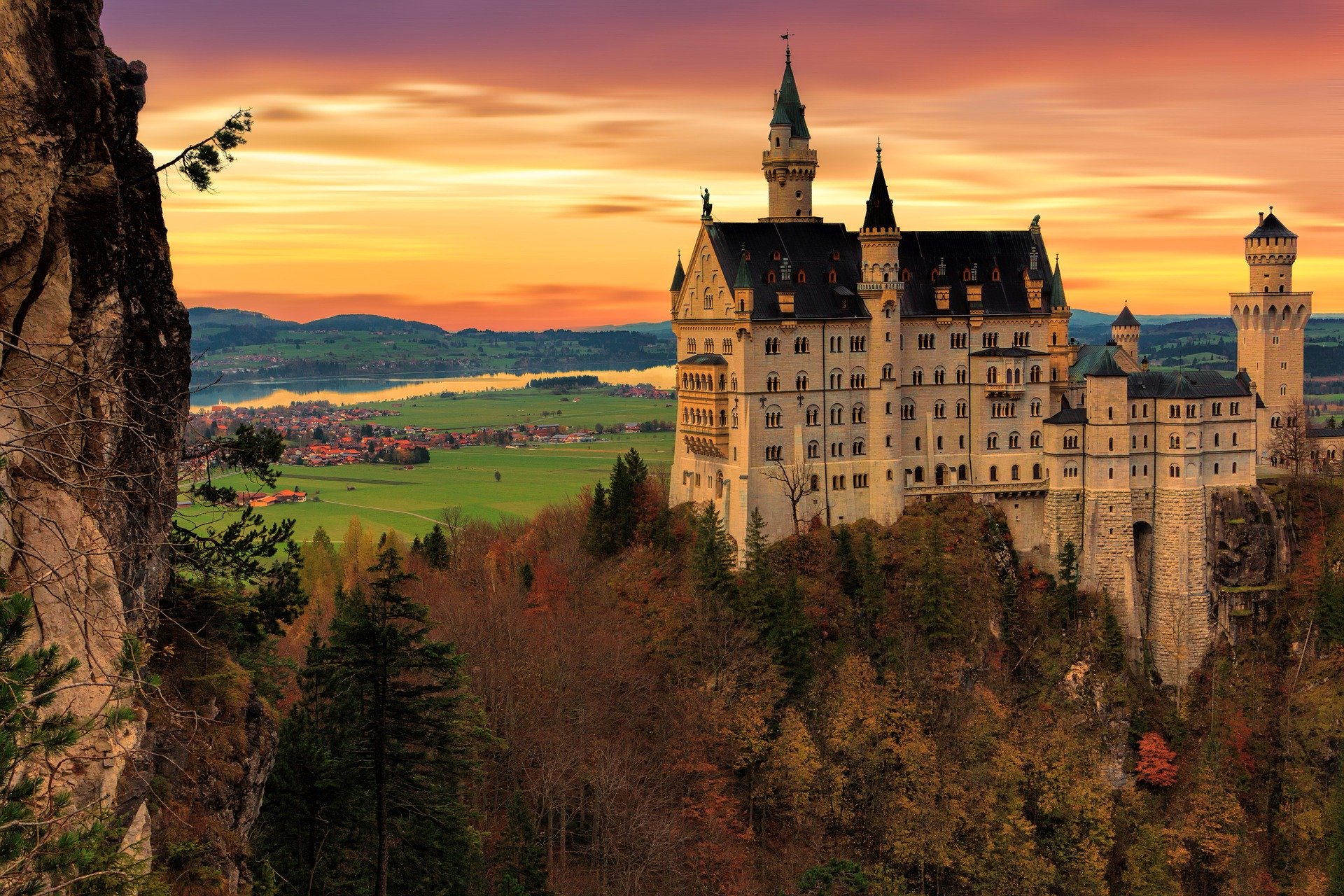Castles of the Middle Ages

When you think of castles, you probably imagine huge stone fortresses with towers, moats, and drawbridges. Castles were common in Europe during the Middle Ages and were often the homes of royal families or other powerful people. The main purpose of castles was to protect the people who lived there from invasions. They were also a status symbol to show other people how important a family was. Many ancient castles still stand in Europe today, and some of them have been home to the same family for many generations.
History of Castles
The Normans were the first group of people to build castles in England, although the Romans before them had built forts that the Normans then expanded and improved. Initially, castles were built out of wood, but eventually, people made castles from stone because they were stronger and lasted longer. Castles usually consisted of a group of buildings that were surrounded by a huge wall and a moat designed to keep attackers out. Castles were often built on the tops of hills so the people inside could see attackers coming from a distance.
Features of Castles
The moat around a castle was a deep ditch filled with water. A drawbridge could be lowered to allow people to cross over the moat into the castle, and the drawbridge would be raised to keep others out. In the center of the castle, the keep was a special tower designed to be the safest place within the castle walls. Food was often stored in the keep. Many castles featured cutouts at the tops of the towers and walls, known as battlements. Battlements were in place to allow defenders to have some protection as they fought against attackers. Arrow slits in the walls allowed archers to shoot arrows from safety. A castle also would have a great hall for formal celebrations, a chapel for religious services, and a gatehouse for the soldiers who guarded the gate.
Famous Castles
One of the most famous castles is Windsor Castle in England, where the British royal family lives. They also spend time at Balmoral Castle, which is in Scotland. The Tower of London is also a castle, and it was built in 1066. Since then, it's been used as a prison, an armory, and a royal palace. St. Michael's Mount is a medieval castle in southwest England, and it sits on a tidal island: When the tide is out, you can walk to it. Richard the Lionheart built Château Gaillard in France in 1196. But maybe one of the most famous castles is Neuschwanstein Castle in Germany, built for King Ludwig II. It's said to have inspired Walt Disney when he created Sleeping Beauty's castle at Disneyland.
Facts About Castles
Castles may have been safe, but they were usually cold and drafty. They also weren't the cleanest places: People kept dogs and cats inside the castle to help control the rat population. Initially, castles were square in shape, but later, people made the towers round so they would be able to see attackers coming from any direction. Castles would have barracks to house the knights, many staircases and hallways that led to bedrooms and sitting rooms, privies for bathrooms, and even dungeons to house prisoners.
Castle Resources
- Overview of Castles: Castles built in medieval times might have been made of wood or stone, and they were usually built to protect an important person's family and wealth.
- Castle Facts: Castles were built in Europe and the Middle East for a period of about 500 years.
- Facts About Castles: Castles were also a symbol of a person's wealth and status in a community or country.
- Ten Facts About Medieval Castles: The Normans built the most castles in Europe during the Middle Ages.
- Storming the Castle: Catapults were used to storm castles, helping attackers to get over the high walls and the moats that surrounded them. You can make your own catapult to play with, but be careful not to hurt anyone!
- Windsor Castle: King William the Conqueror built Windsor Castle as a replacement for a nearby Saxon palace.
- Tudor Tattershall: What Went on at the Castle During the Tudor Dynasty: Tattershall Castle in Lincolnshire was a gift to the duke of Suffolk in 1537, and it became his base of operations for a period of time.
- Bamburgh Castle History: Located in northeast England, Bamburgh Castle is a large castle that's still inhabited today.
- 11 Facts About Castles That You Probably Don't Know: On average, it took about ten years to build a castle.
- Life in a Medieval Castle: Castles usually had only a few windows, which were very high up the walls to keep out the weather and any enemies.
- Castles and Forts: While today, castles and forts are both things kids like to imagine and create as they play, in medieval times, both of these types of structures were built to protect those who lived inside their walls.
- Windsor Castle Fact Sheet: Windsor Castle has been the home of British royalty for nearly 1,000 years, and today, about 150 people live there.
- Guedelon: A Castle in the Making: A team of builders is working to make a new castle from scratch in France, using materials and building processes that were used during the 13th century.
Edited by: Ben Thompson

